Freemason Accessories are not mere decorative items. They are imbued with profound meaning, history, and prestige in Masonic culture. Right from aprons and rings to ritual implements and books, each has a role to play. Masonic accessories enable members to express identity, rehearse rituals, and retain values.
By studying them, you can understand how symbolism and tradition meet the current requirements. This guide covers every important category of Masonic regalia, jewelry, attire, ceremonial tools, collectibles, books, and modern accessories. You’ll also learn how to care for them and where to find authentic pieces.
Masonic Regalia
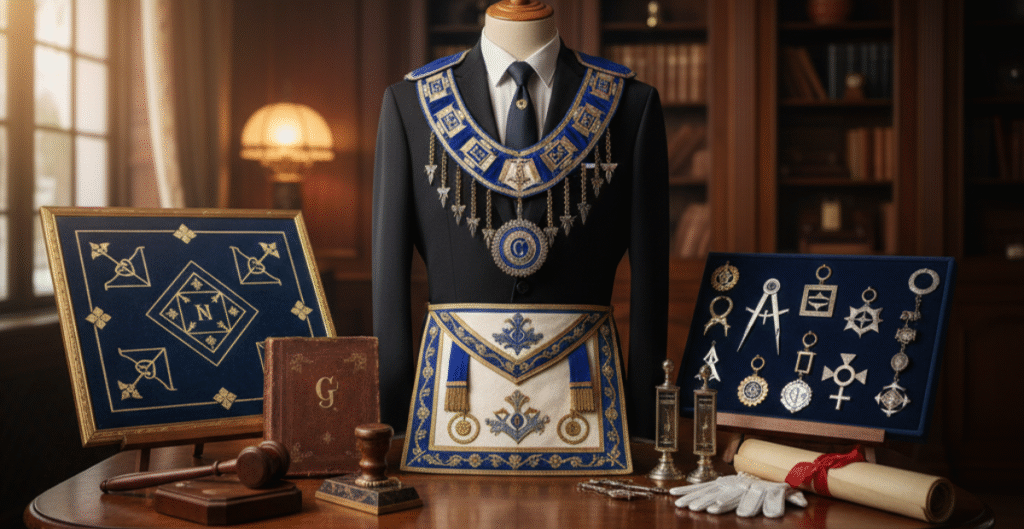
The regalia is the heart of Freemason accessories. Every lodge uses aprons, sashes, collars, and gloves. The apron is the oldest and most respected item. It shows purity, humility, and a brother’s rank. White lambskin aprons remain a symbol of honor, while ornate aprons with embroidery mark higher degrees. Gloves are another classic item. White gloves are worn to show clean hands and pure intentions during ceremonies.
Headwear also forms part of traditional regalia. Some rites use specific hats or caps, which differ across countries. Quality and craftsmanship matter because these items are used for many years. A well-made regalia not only looks dignified but also preserves the ancient symbolism.
Clothing and Attire

Freemasonry requires members to dress formally. Suits or tuxedos are often standard for lodge meetings. A white shirt and tie are common, with white gloves adding tradition and uniformity. The attire symbolizes respect for the lodge and the ritual taking place.
There are differences between everyday attire and ceremonial clothing. While a member may wear a dark suit for most meetings, formal events demand full regalia with collars, sashes, and aprons. Each piece of clothing serves both practical and symbolic purposes, ensuring the dignity of Masonic gatherings.
See more: The Shriner Fez: History, Symbolism, and Legacy
Common Freemason Regalia and Their Meanings
| Regalia Item | Symbolism | Usage |
| Apron | Purity and rank | Worn at meetings and rituals |
| Gloves | Clean hands and pure intent | Ceremonial attire |
| Collar | Authority of office | Officer regalia |
| Hat | Respect and dignity | Certain rites |
Jewelry and Symbols
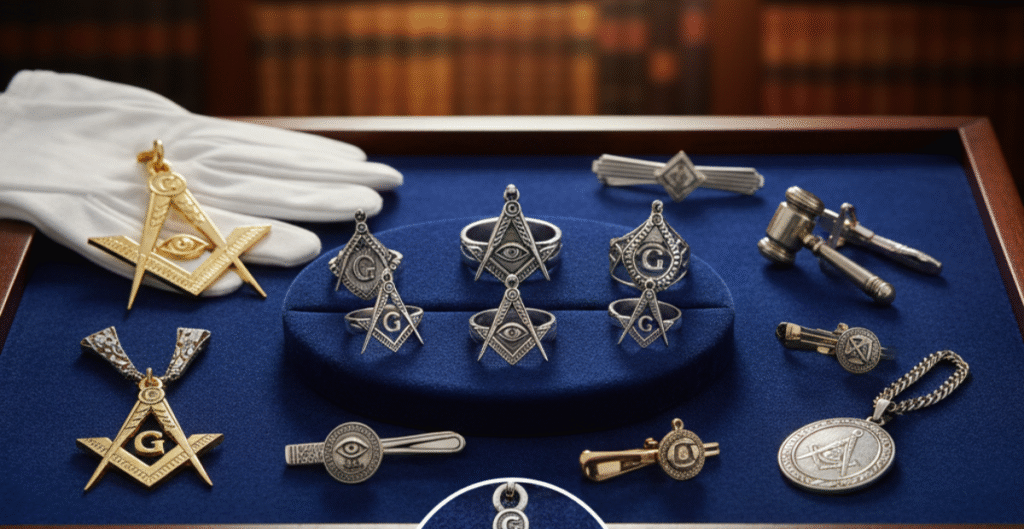
Jewelry is one of the most visible forms of Freemason accessories. Rings are the most popular choice. They often feature the square and compass, the best-known Masonic symbol. Members wear rings to express their connection to the brotherhood and to recognize each other discreetly.
Other jewelry includes lapel pins, cufflinks, tie bars, and even watches. Each item carries Masonic emblems and acts as a daily reminder of values. Some prefer subtle pieces, like a small pin, while others choose ornate rings with gold or gemstones. The meaning is always tied to Masonic teachings of morality and unity.
Ceremonial Accessories
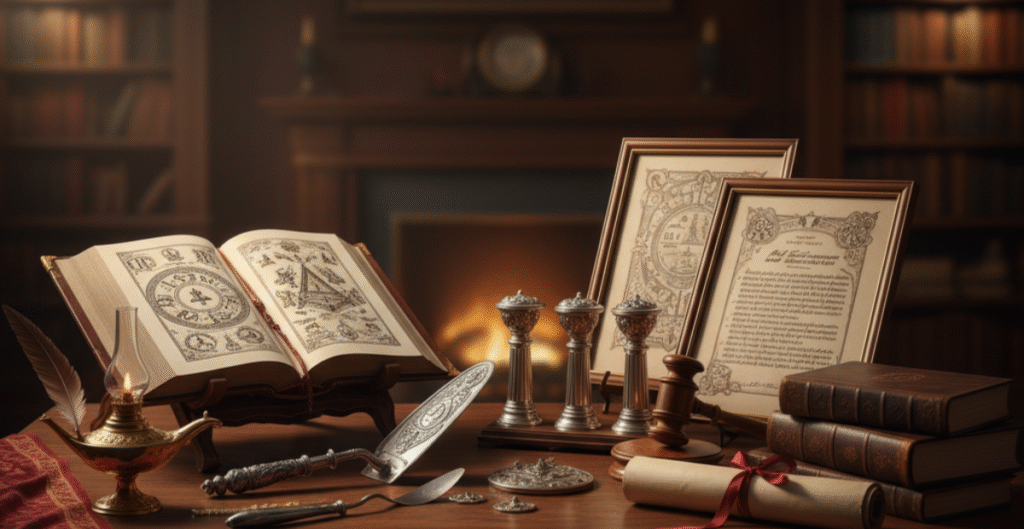
Lodge ceremonies require special tools. The gavel is a common example, used by the Worshipful Master to guide proceedings. Rods and batons carried by officers also play symbolic roles, representing authority and duty.
On the altar, tools like the square, compass, and other working instruments are displayed. These are not ordinary tools but sacred symbols of moral lessons. Ritual ceremonies also use candles, pillars, and other objects to teach through allegory. Each item is carefully chosen to preserve tradition and transmit teachings.
Collectibles and Decorative Items
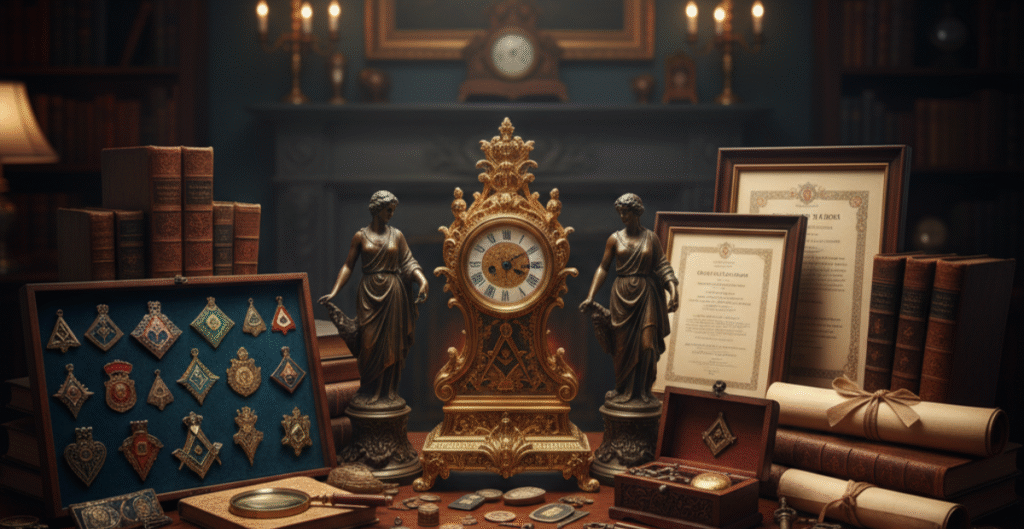
Many Masons collect items beyond official regalia. Coins, medallions, and commemorative tokens are common. They often mark anniversaries, lodge events, or important milestones. Collectors value them for both historical and personal reasons.
Home décor is another category. Plaques, clocks, glassware, and framed emblems decorate offices or studies. Antique pieces, such as old aprons or gavels, are also treasured. These collectibles connect members with the past and keep the Masonic story alive through physical objects.
Books and Stationery
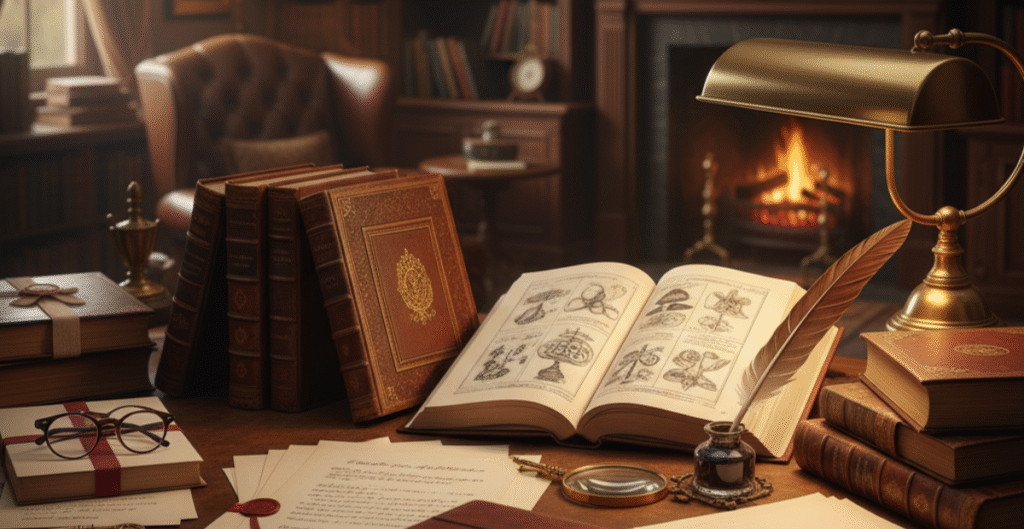
Books are essential Masonic accessories. Ritual books guide ceremonies and preserve sacred words. Many lodges use constitutions or manuals that explain laws and traditions. Masonic Bibles, often with symbolic illustrations, are also central items.
Stationery is another important tool. Personalized writing sets, lodge records, and official documents maintain order and history. Through books and stationery, Freemasonry passes knowledge from one generation to another. They serve both as practical tools and as guardians of tradition.
Types of Freemason Jewelry
| Jewelry Type | Symbol | Purpose |
| Ring | Square and compass | Daily reminder and identity |
| Lapel Pin | Lodge emblem | Discreet recognition |
| Cufflinks | Masonic symbols | Formal occasions |
| Watch | Engraved compass | Personal keepsake |
Modern Accessories

Freemasonry has adapted to modern life. Members now use items like keychains, wallets, and pens engraved with Masonic emblems. These everyday items allow brothers to carry symbols subtly in their daily routines.
Technology has also entered the picture. Phone cases, USB drives, and even travel gear feature the square and compass. While not traditional, they blend heritage with practicality. Modern accessories make it easier for members to keep their identity alive in a fast-changing world.
Where to Get Masonic Accessories
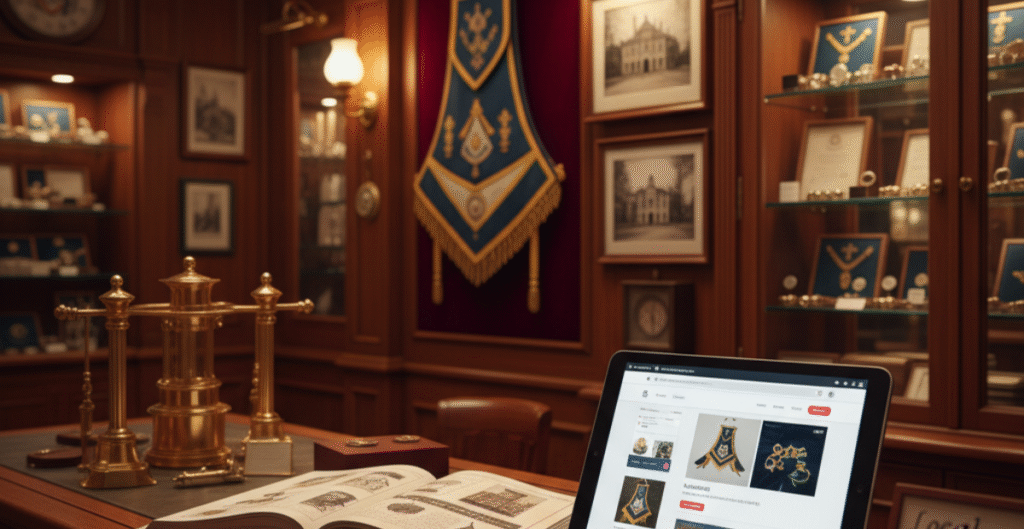
Authenticity matters when buying Freemason accessories. Official lodge suppliers and trusted vendors ensure quality and accuracy. Some lodges even run their own shops for members. Buying from approved sources avoids counterfeit or poorly made items.
Online specialty stores also provide a wide range. Custom-made regalia and jewelry are another option, giving members a chance to personalize their items. Whether in-person or online, the key is to confirm the authenticity of symbols and the quality of materials.
Caring for and Preserving Masonic Accessories
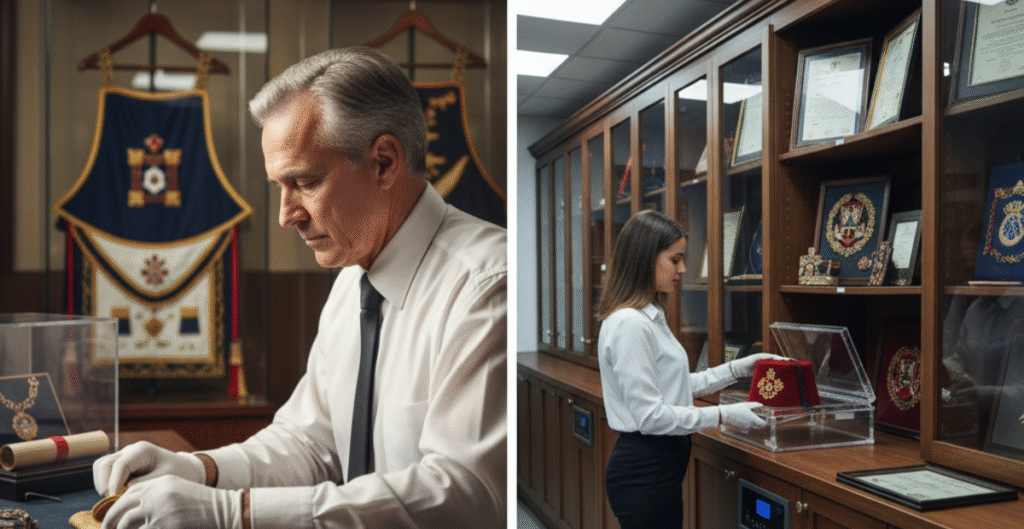
Respect for accessories means proper care. Regalia such as aprons and sashes should be stored in protective cases. Clean white gloves regularly to keep them pure. Jewelry requires polishing to maintain shine and preserve details of symbols.
Antique items need even greater care. Keep them away from sunlight, moisture, and dust. Collectors often use display cases to protect and showcase these valuable pieces. Proper maintenance honors the history of Freemasonry and extends the life of each accessory.
Sources for Masonic Accessories
| Source | Benefit | Consideration |
| Lodge suppliers | Authentic and approved | Limited styles |
| Online stores | Wide selection | Check authenticity |
| Custom makers | Personalized designs | Higher cost |
| Antique shops | Historic value | Verify age |
Historical Value of Freemason Accessories
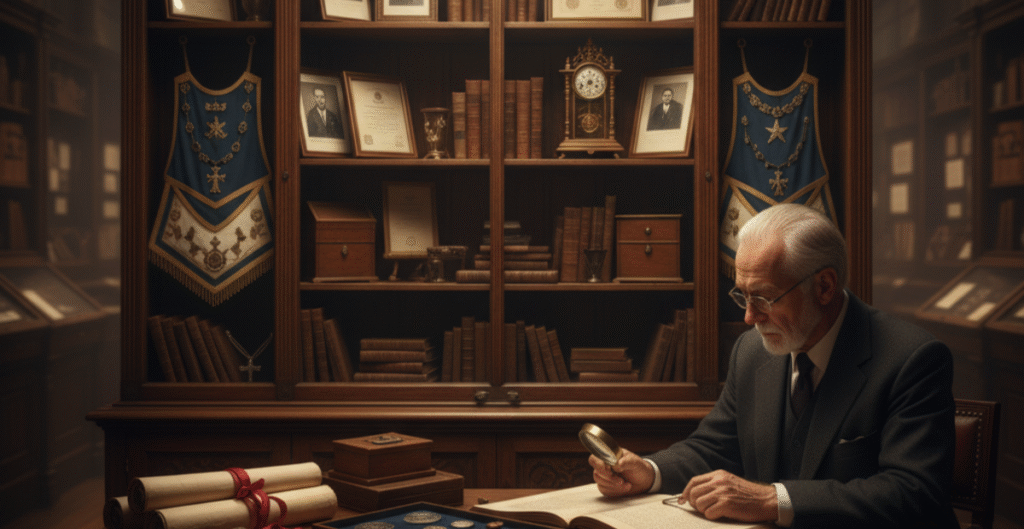
Many Freemason accessories carry history beyond their immediate use. Antique aprons, gavels, or rings often tell stories of past lodges and members. Collectors and historians treasure these items because they reflect the evolution of Masonry over centuries. A single engraved jewel or coin can reveal dates, locations, and events tied to the craft.
Museums and private collections often showcase these artifacts. They remind members of how Freemasonry spread worldwide and influenced culture. Owning or studying such items gives a sense of continuity, linking today’s Mason with the traditions of earlier generations.
Symbolism in Freemason Accessories
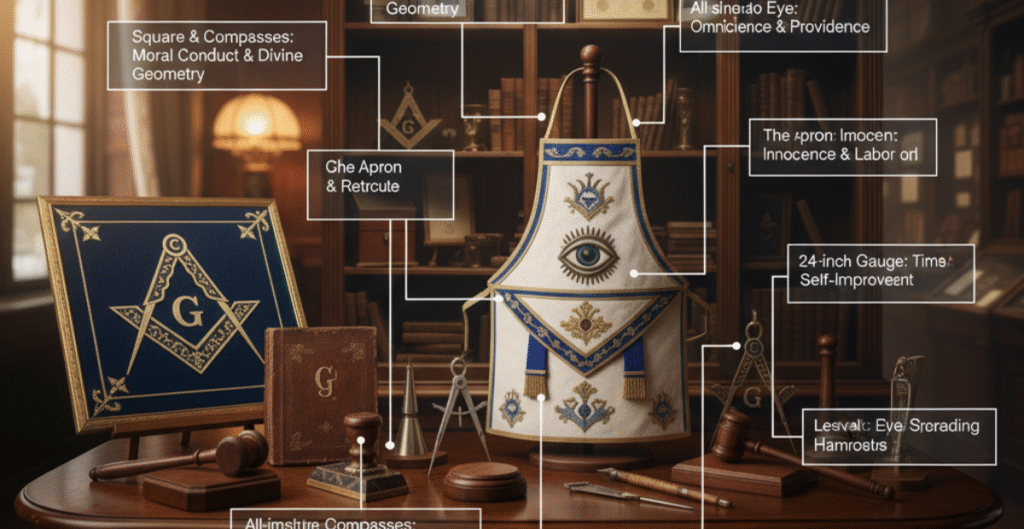
Every Masonic accessory carries layered meaning. The square teaches morality, while the compass represents boundaries of self-control. The apron stands for purity, and the gavel signifies authority. These are not random designs but carefully chosen lessons expressed through objects.
Understanding the symbolism deepens a Mason’s journey. A simple ring on the finger becomes a constant reminder of duty, morality, and fellowship. Without the symbolism, the accessory would be only decoration. With it, the item becomes a living lesson in ethics and brotherhood.
You will like : The Shriner Fez: History, Symbolism, and Legacy
The Role of Freemason Accessories in Brotherhood
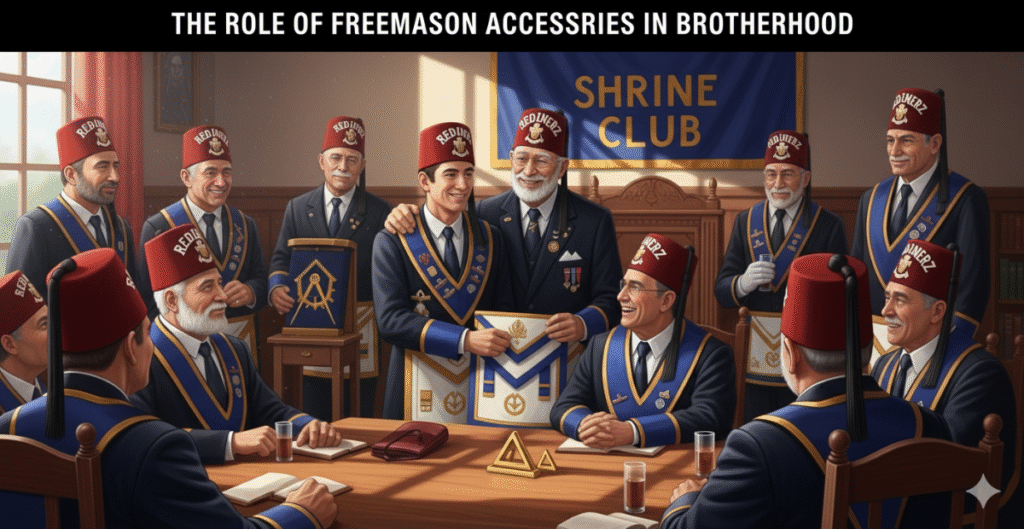
Accessories also serve as a bond among members. A ring or lapel pin quietly signals shared membership, creating instant recognition. This discreet display builds trust and unity. It allows Masons to identify one another in daily life without words.
During lodge meetings, wearing regalia ensures equality. Every brother, regardless of profession or background, stands on common ground once the apron is tied. The accessories remind members that the lodge is a place of unity, learning, and respect.
Choosing Quality Freemason Accessories
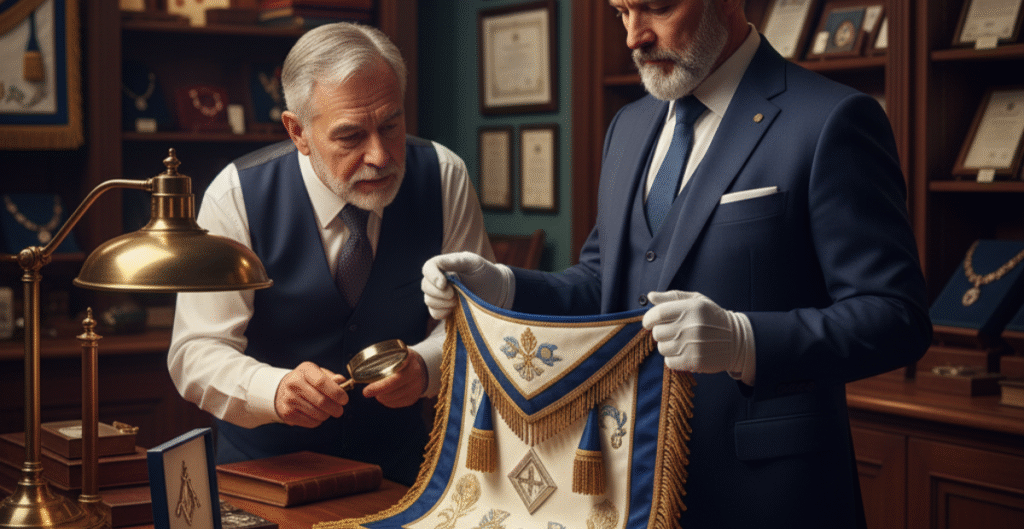
When selecting Masonic accessories, quality should never be ignored. Regalia made from fine lambskin or high-grade embroidery lasts longer and keeps its dignity. Jewelry crafted from durable metals like gold or silver preserves its shine and detail. Poorly made items may lose their value and meaning quickly.
Checking for authenticity is also vital. Official emblems should be accurate, not distorted or cheaply stamped. Many members prefer investing in fewer but higher-quality pieces that can be passed down. This way, the accessories remain treasures for future generations, not just temporary items.
FAQ”s
What are Freemason accessories used for?
They are used to show identity, perform rituals, and preserve tradition.
Why do Freemasons wear aprons?
Aprons symbolize purity, humility, and the honor of being part of the craft.
Can non-Masons buy Masonic accessories?
Some items are available to the public, but official regalia is reserved for members.
How do I know if Masonic jewelry is authentic?
Buy from authorized vendors, official lodge shops, or trusted jewelers.
Are there modern Freemason accessories?
Yes, items like keychains, phone cases, and pens carry Masonic symbols today.
Conclusion
Freemason accessories are not simple objects. They represent identity, duty, and tradition. From regalia and jewelry to ceremonial tools, every item plays a part in preserving the values of Freemasonry. Authenticity, care, and respect make these items more than possessions—they become symbols of a timeless brotherhood. Choosing wisely ensures you honor the craft and carry its legacy forward.



